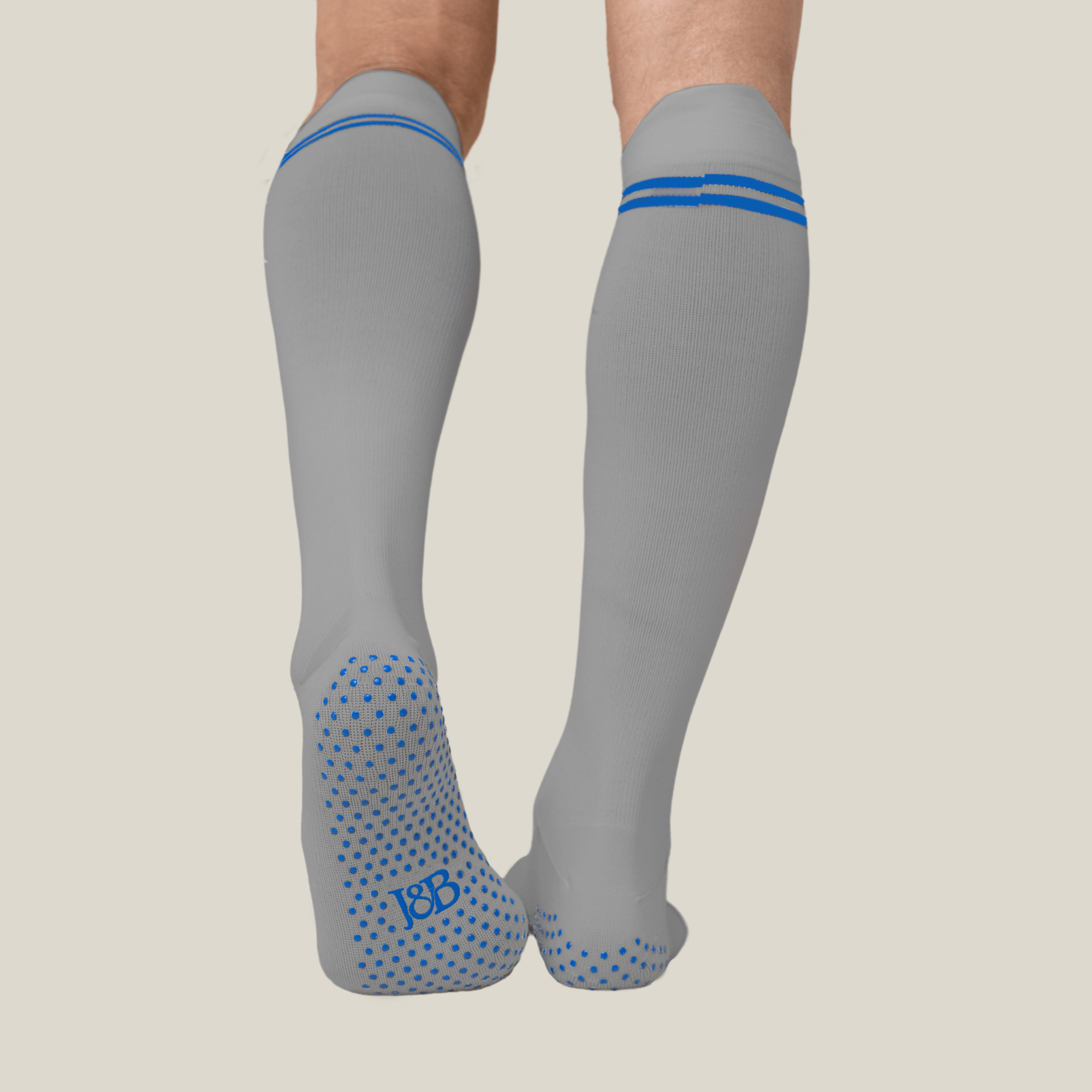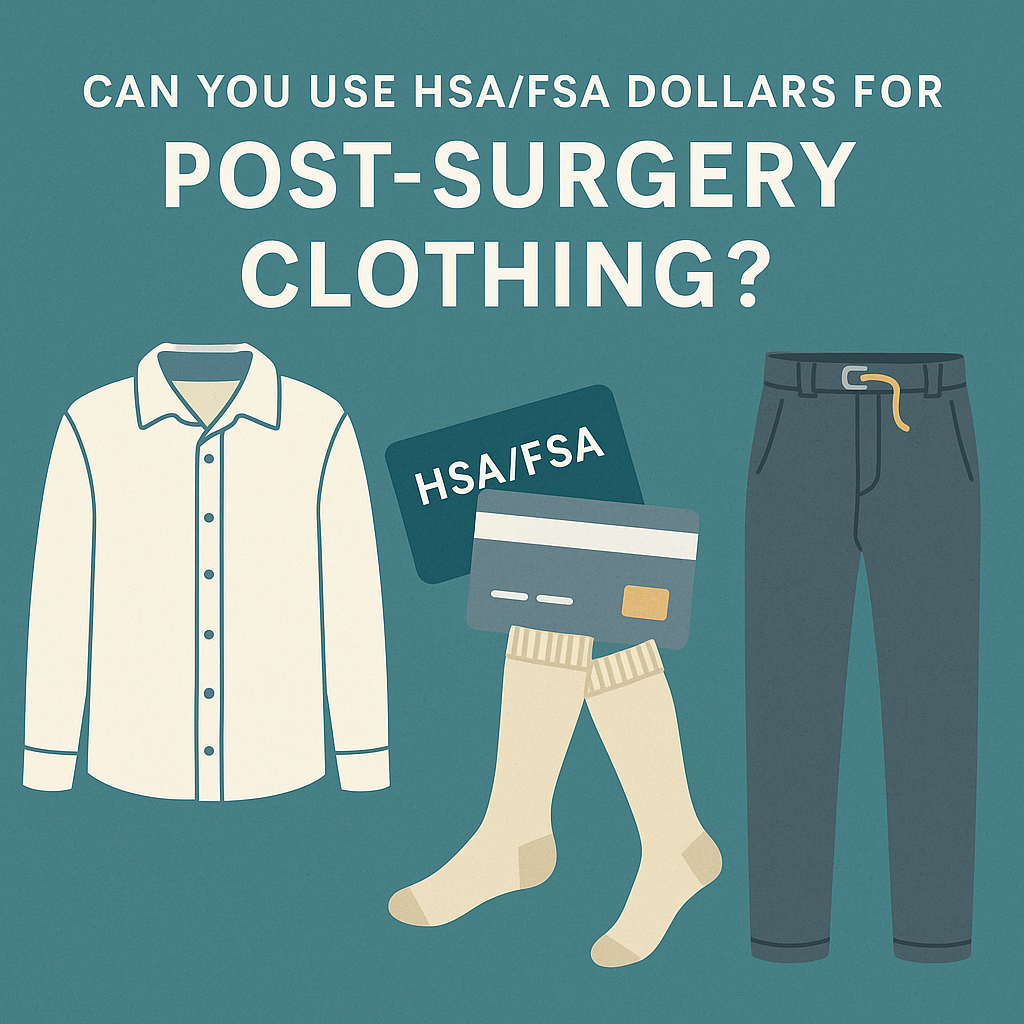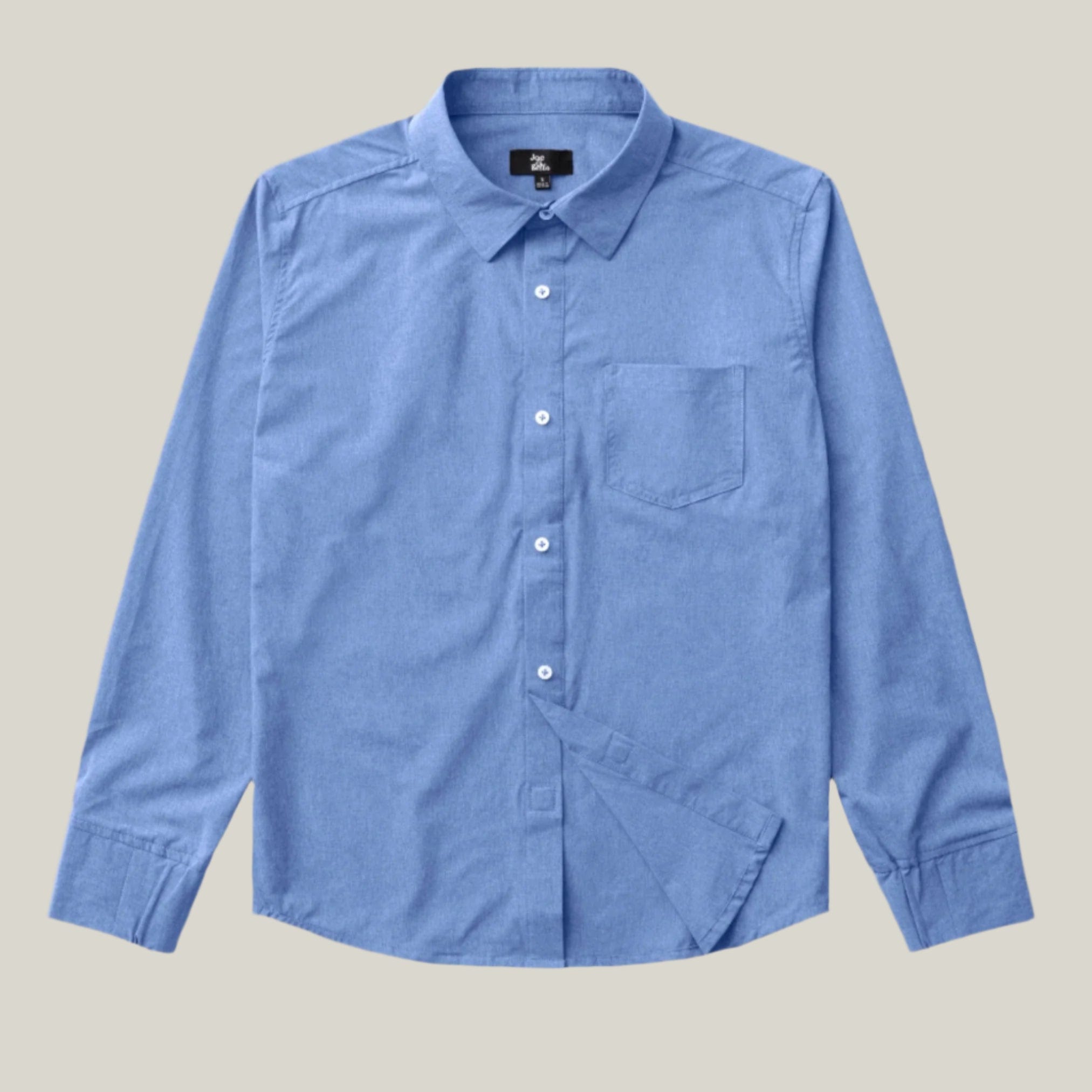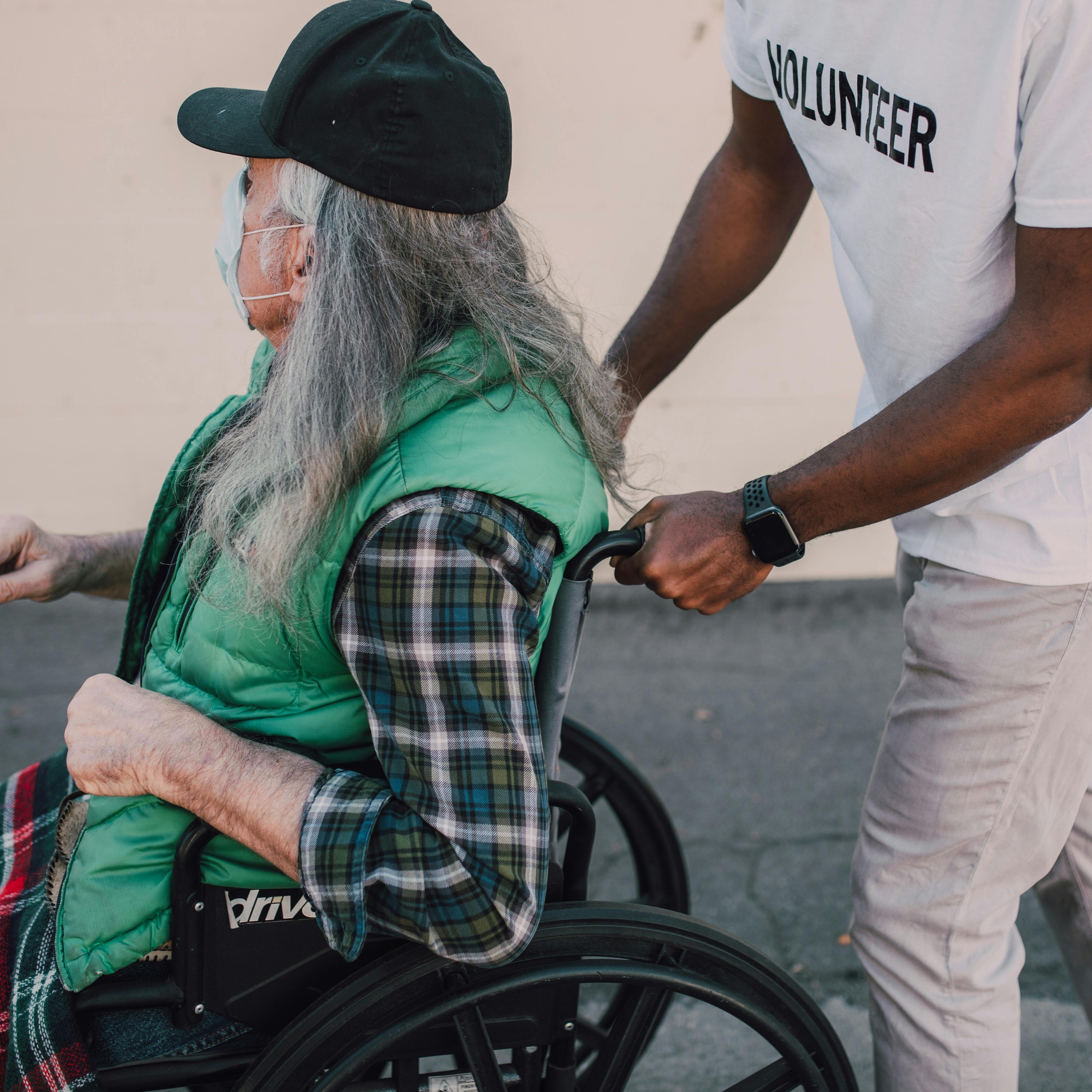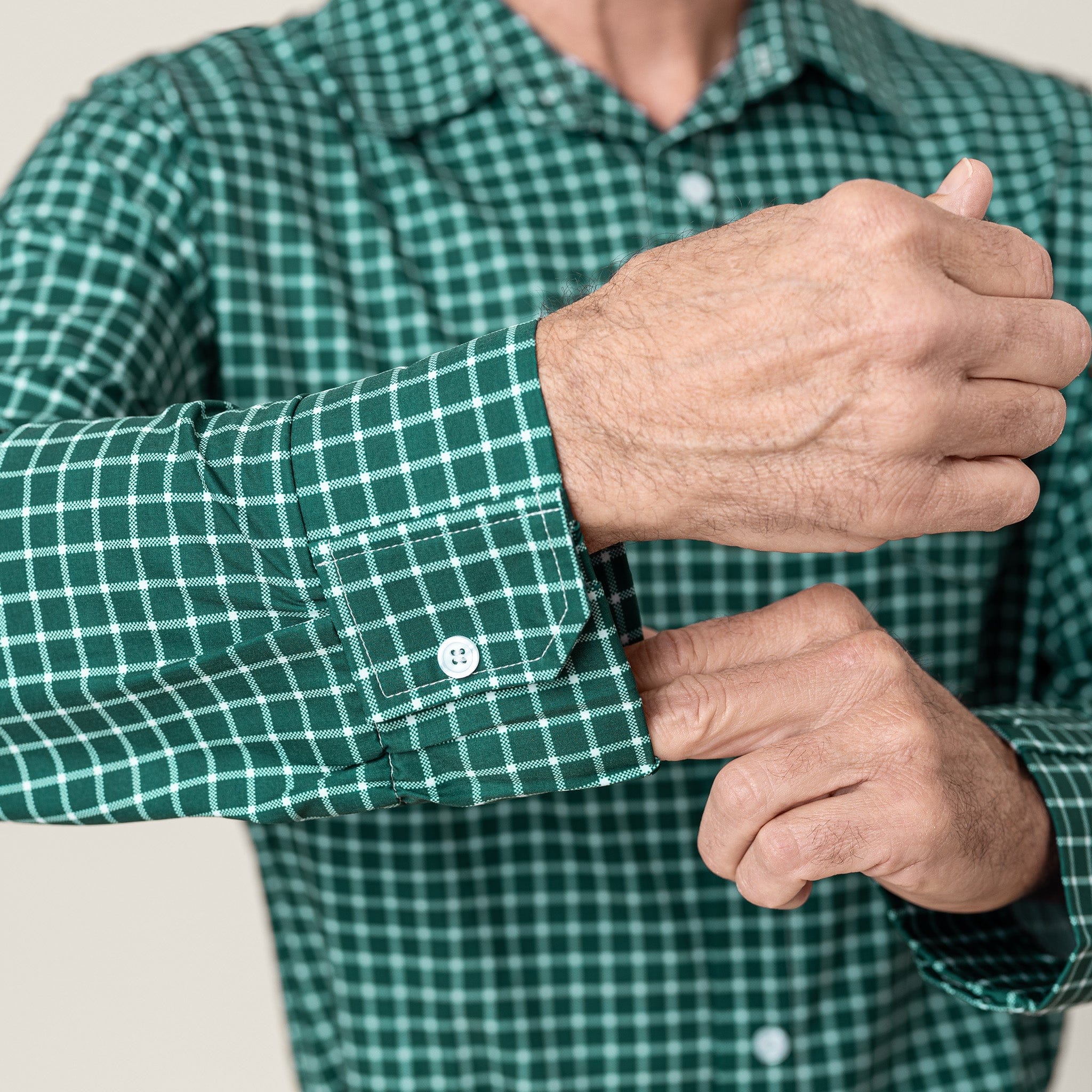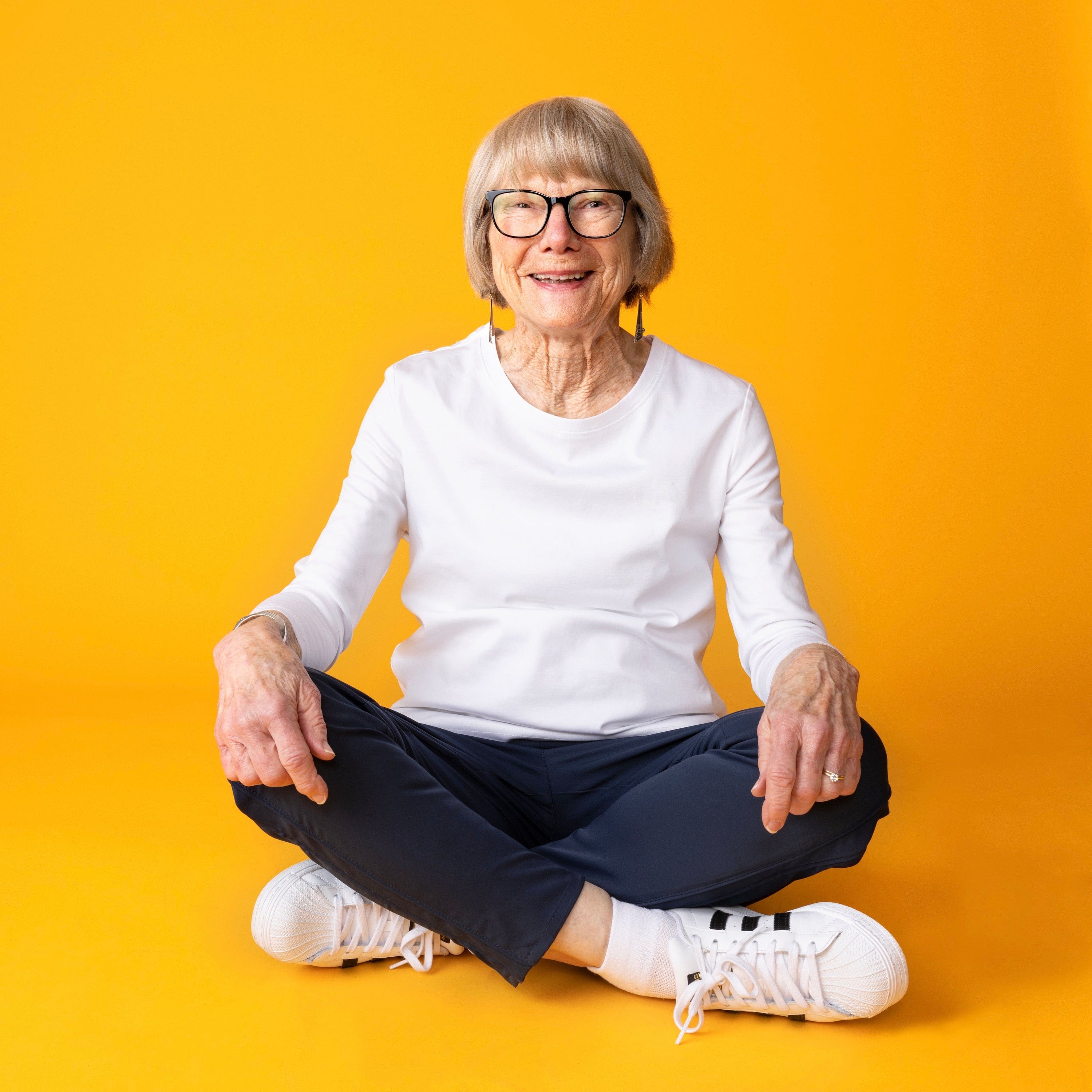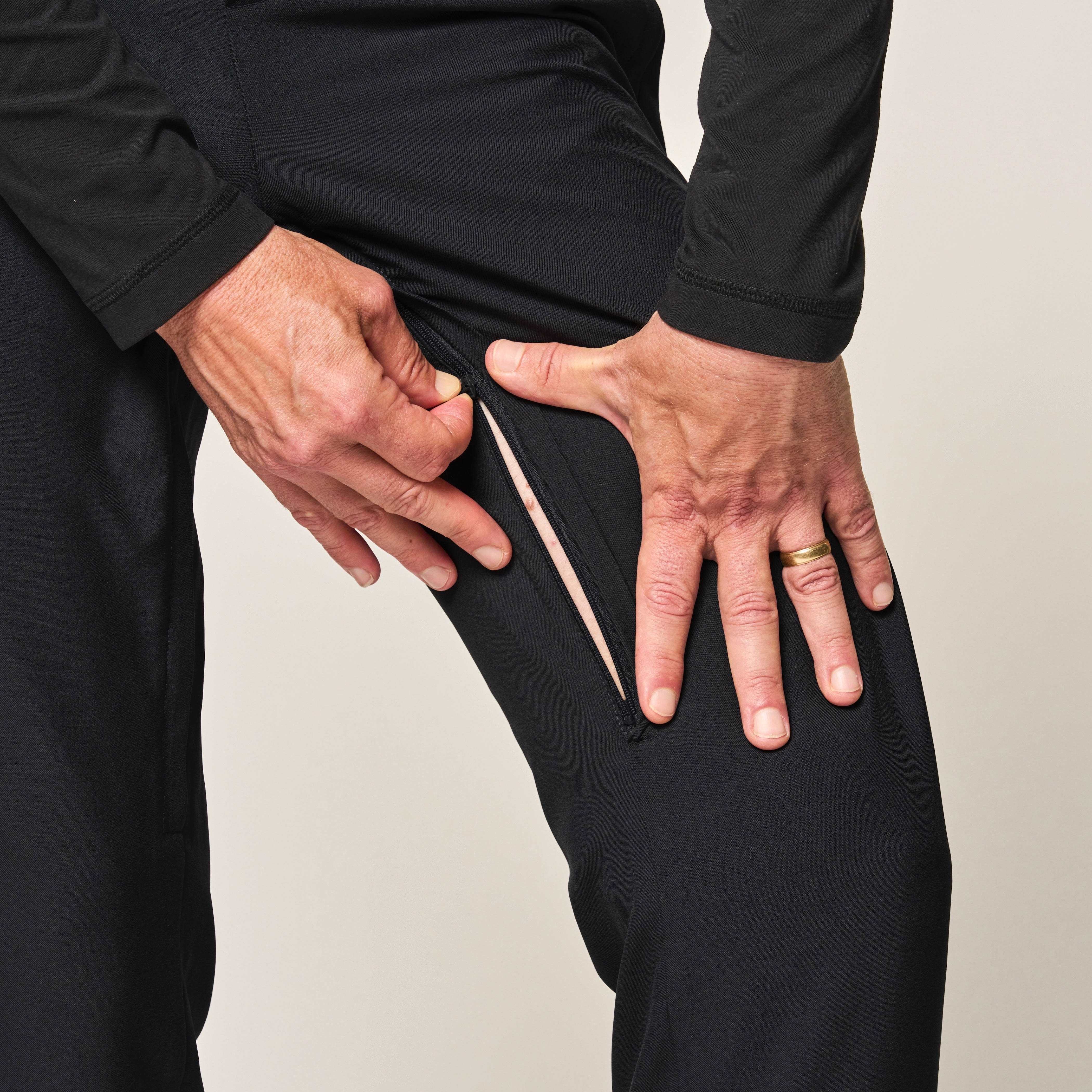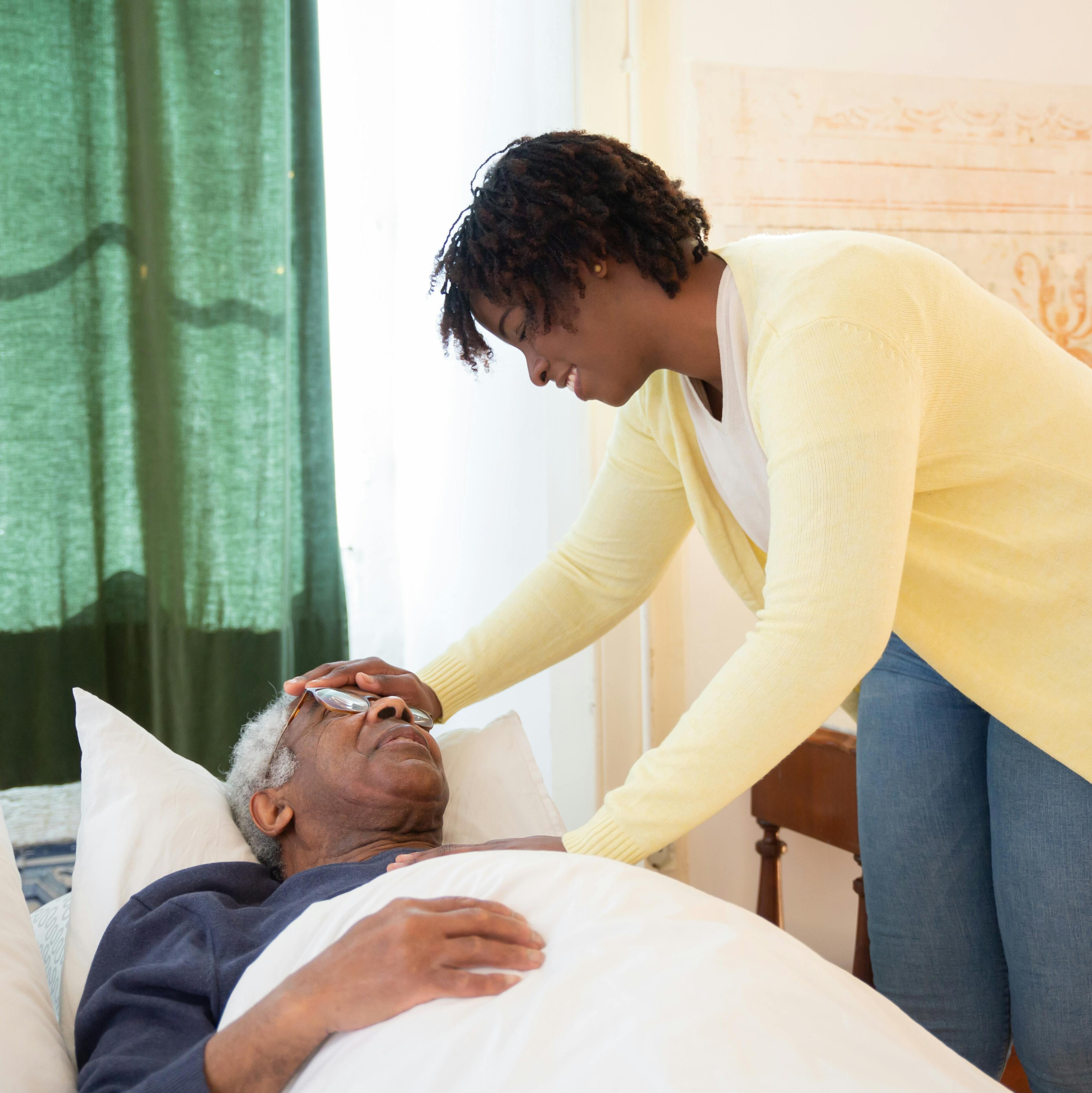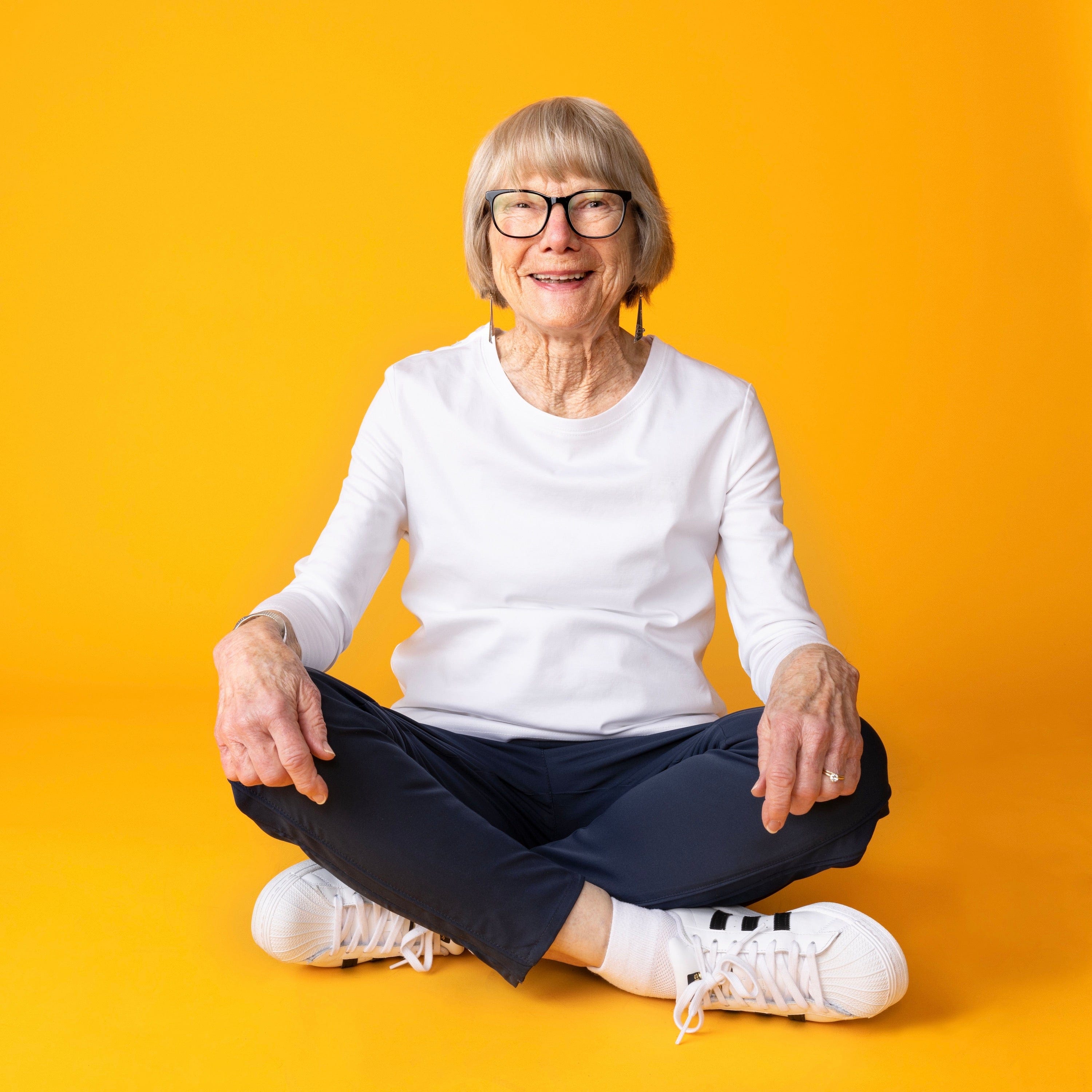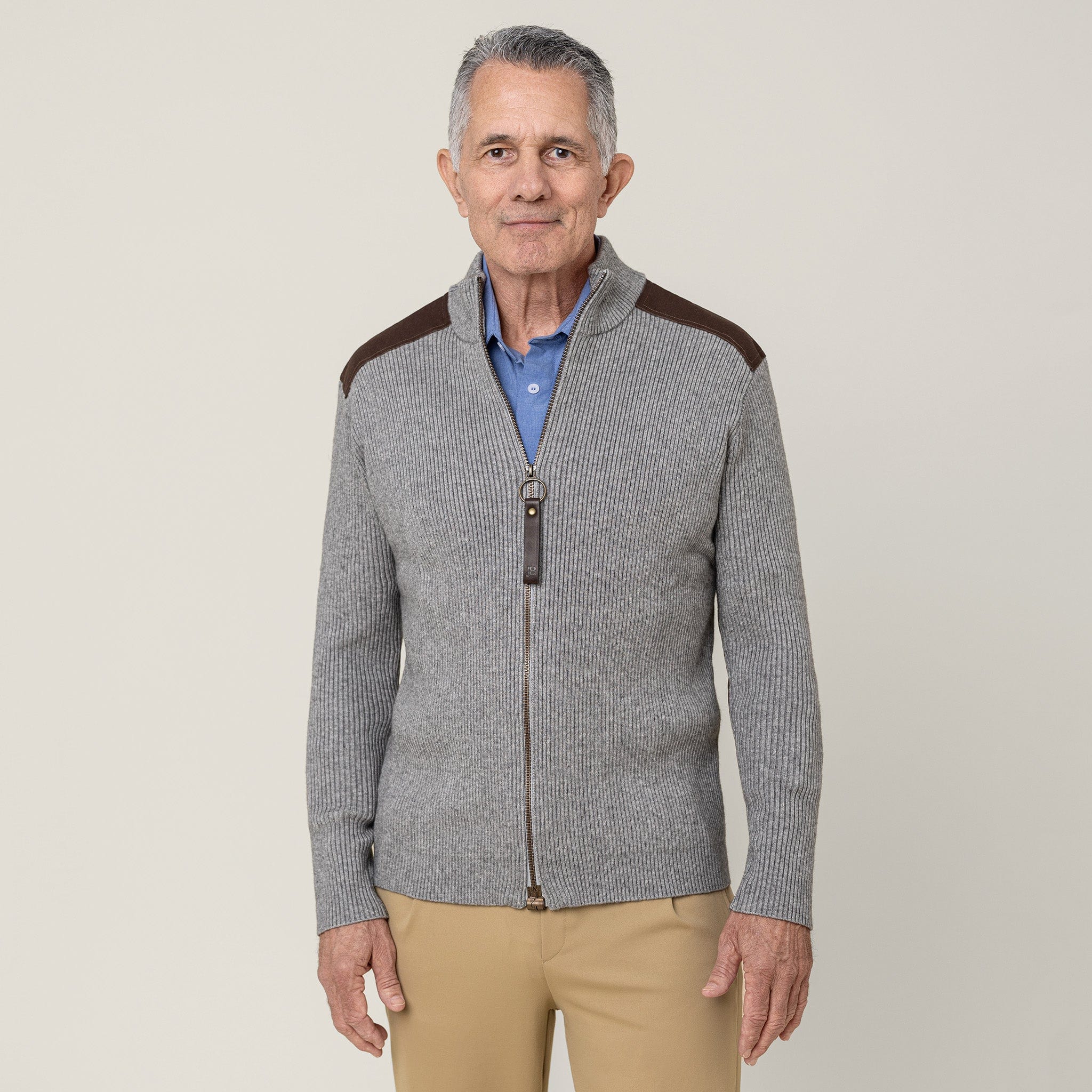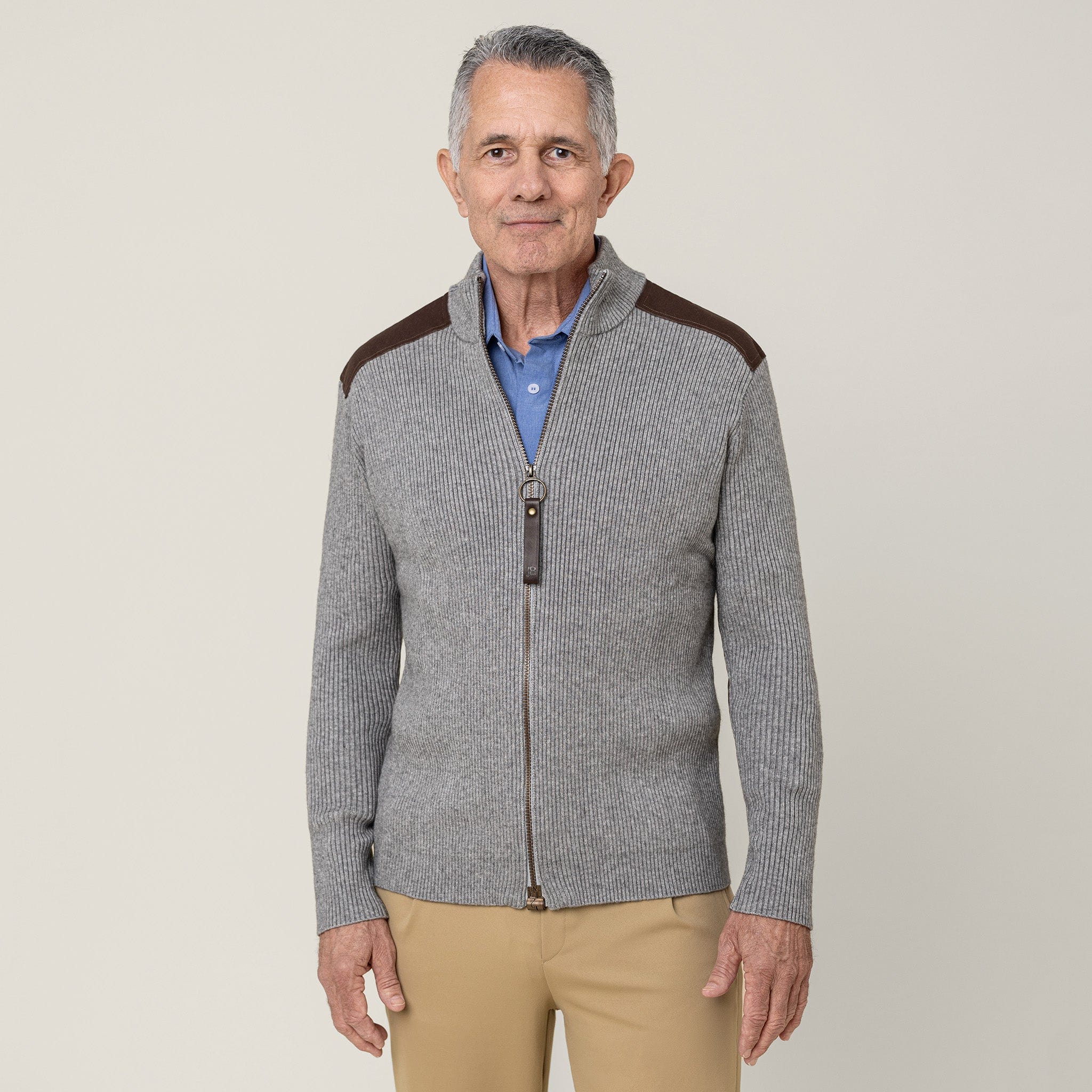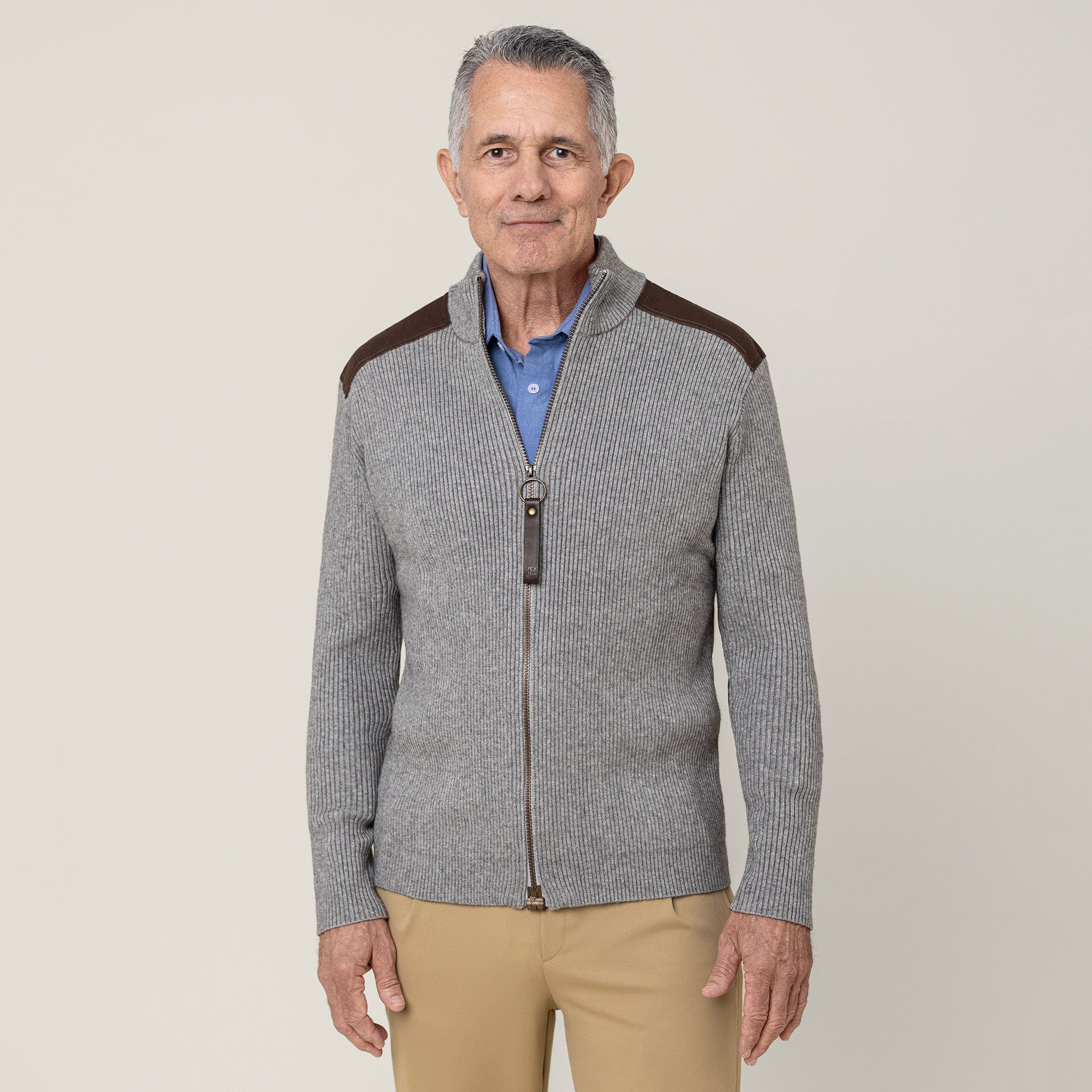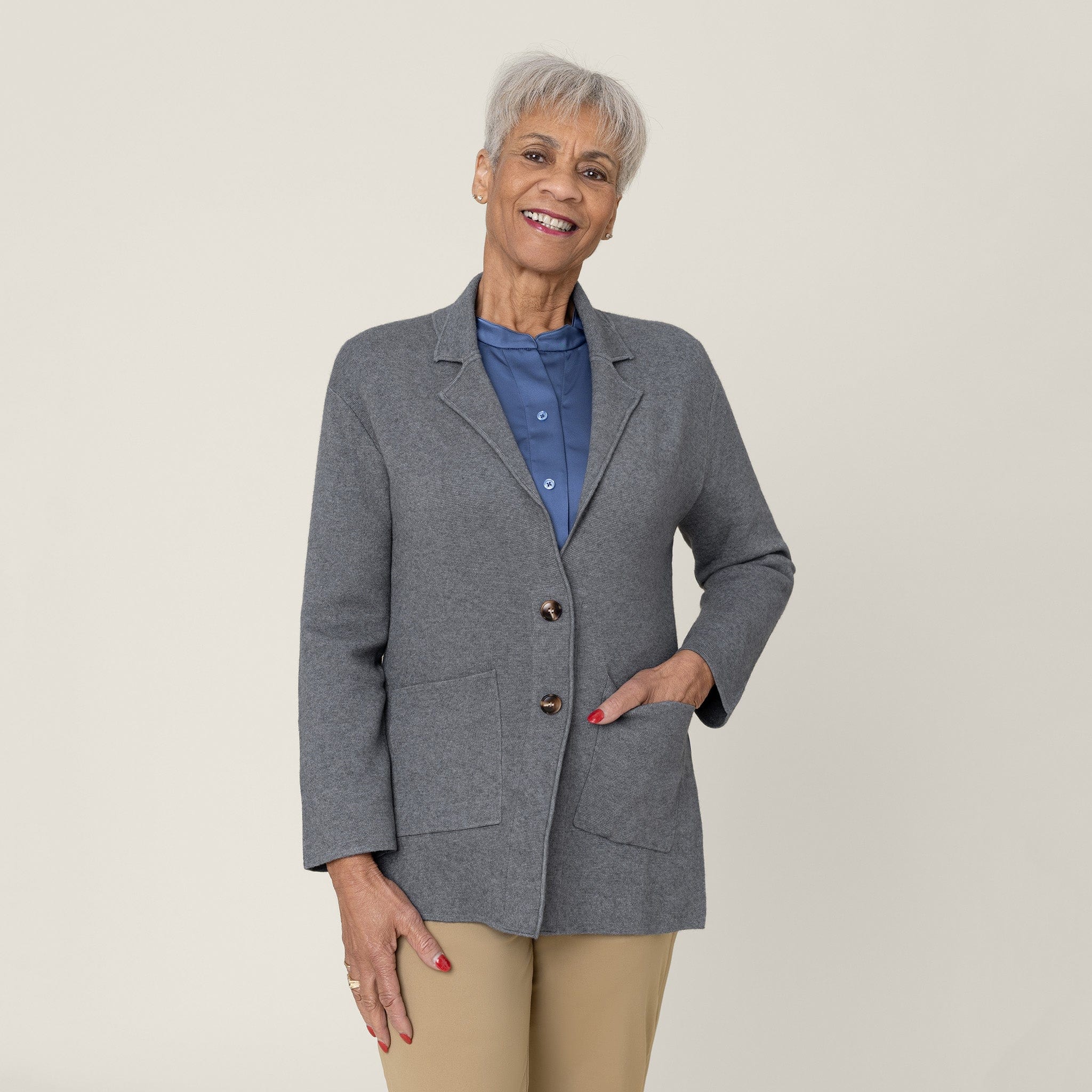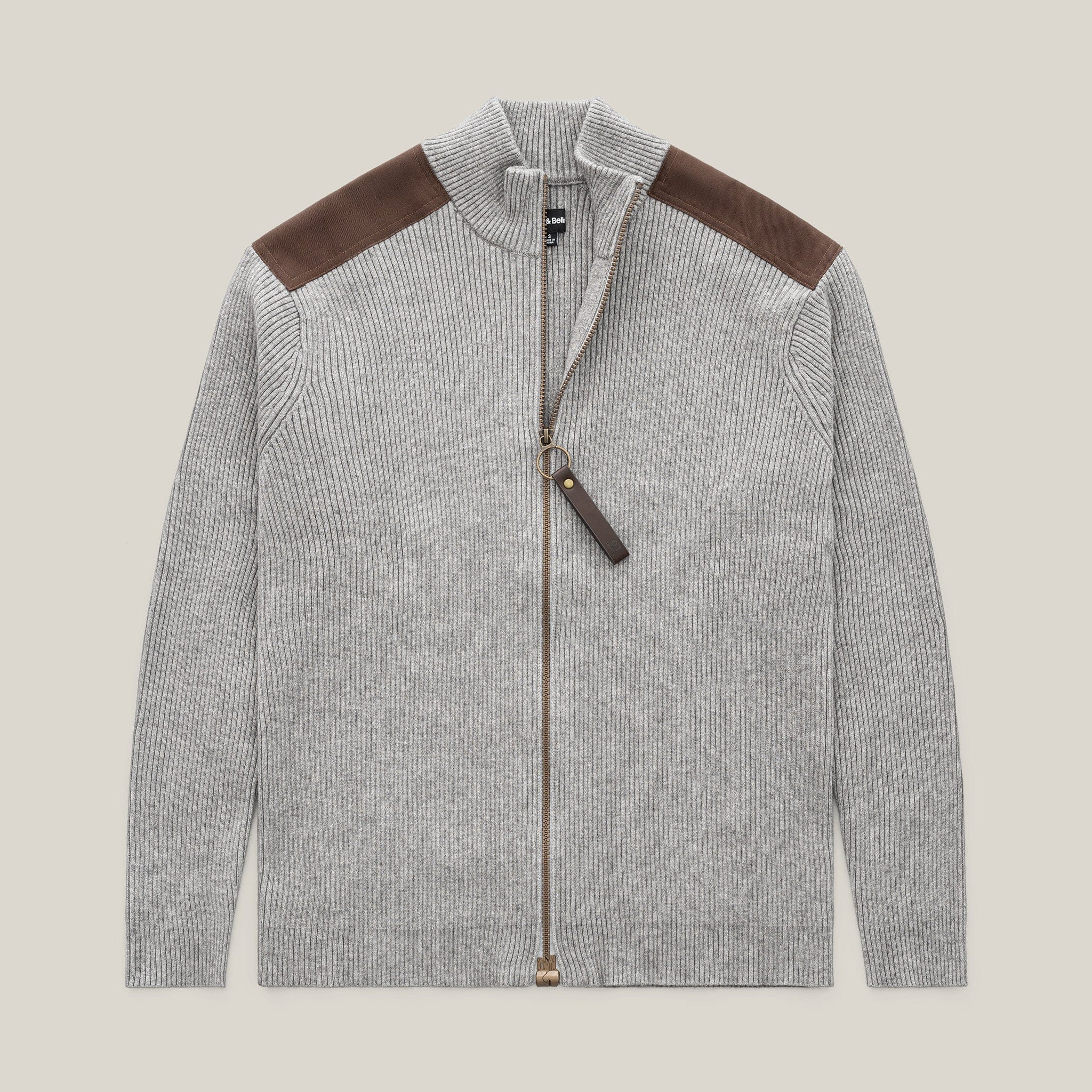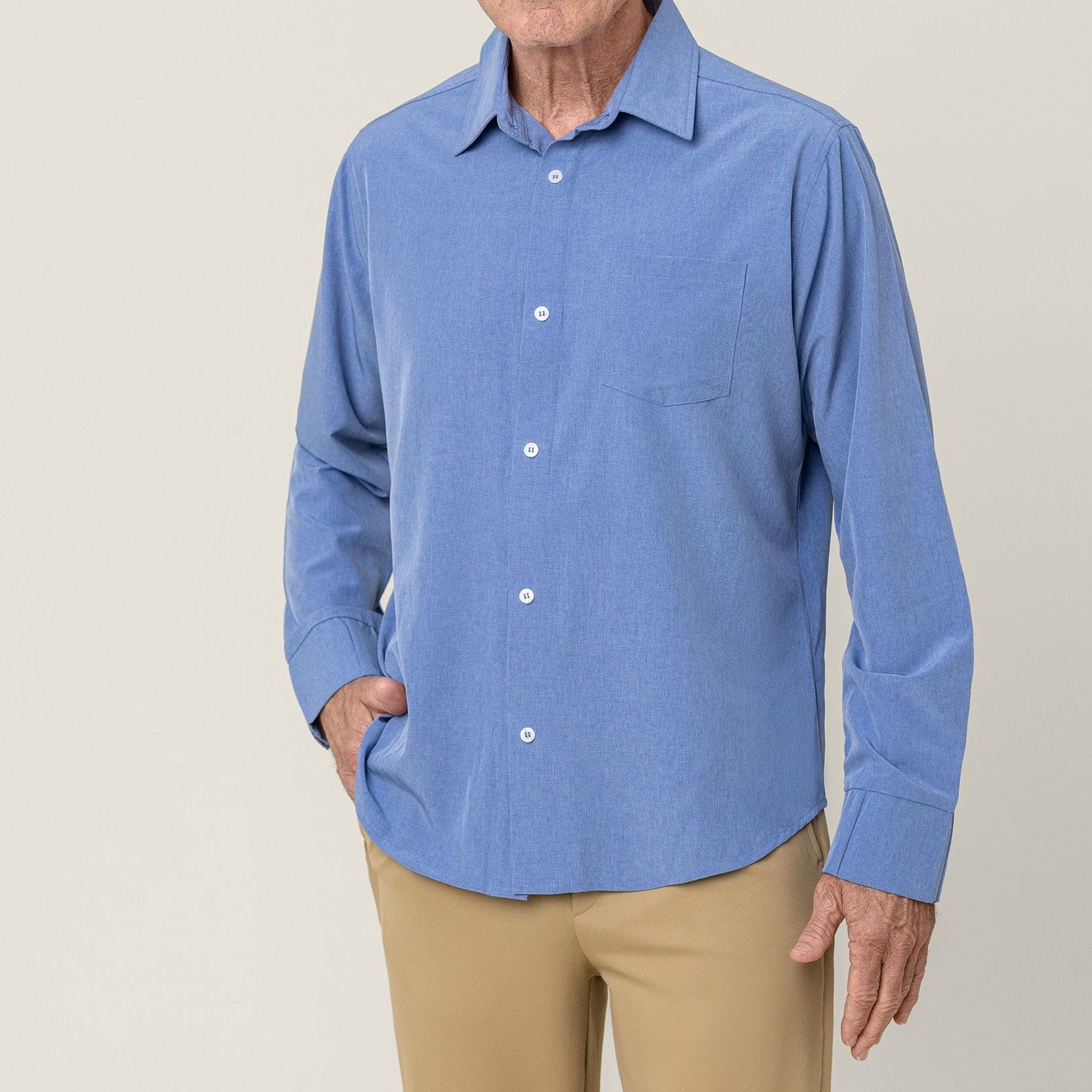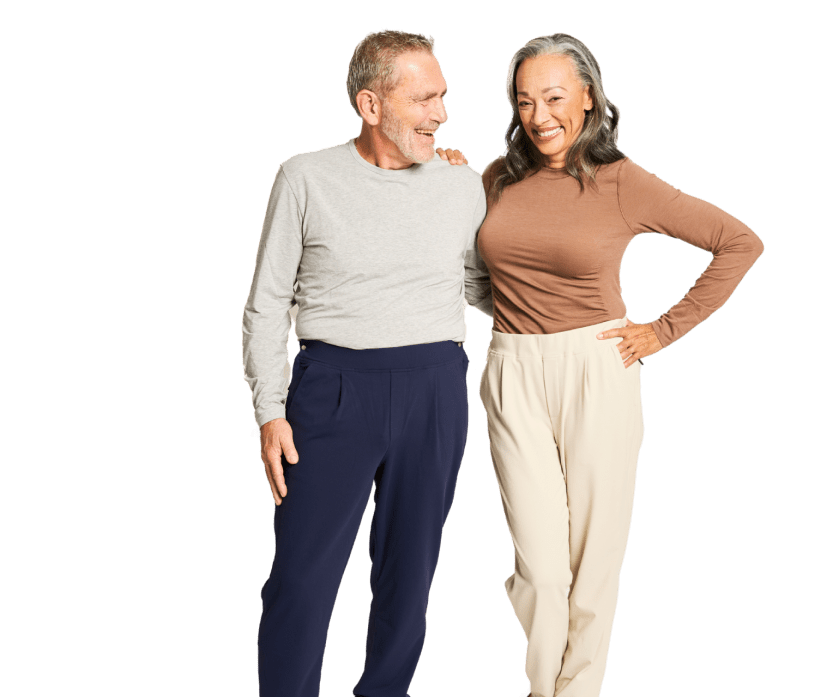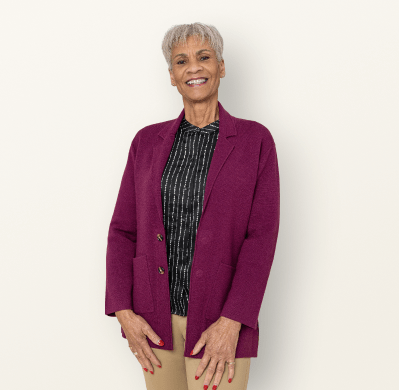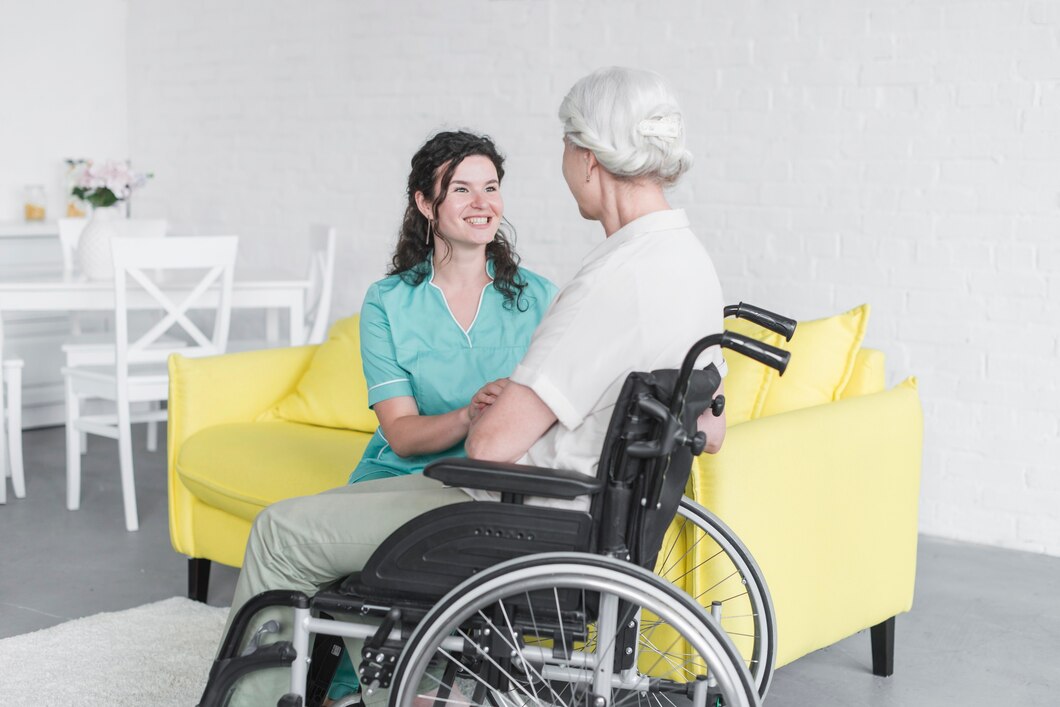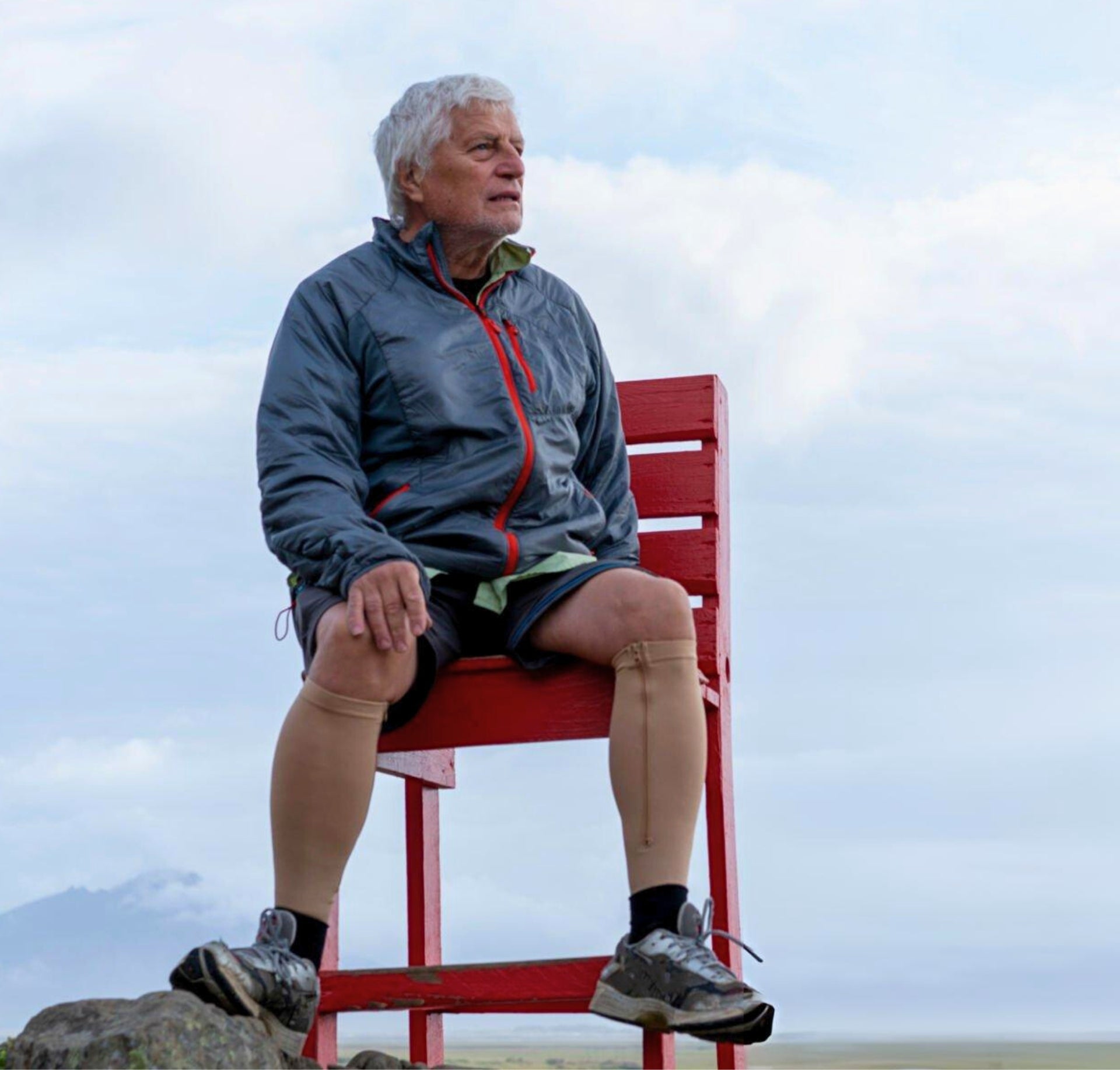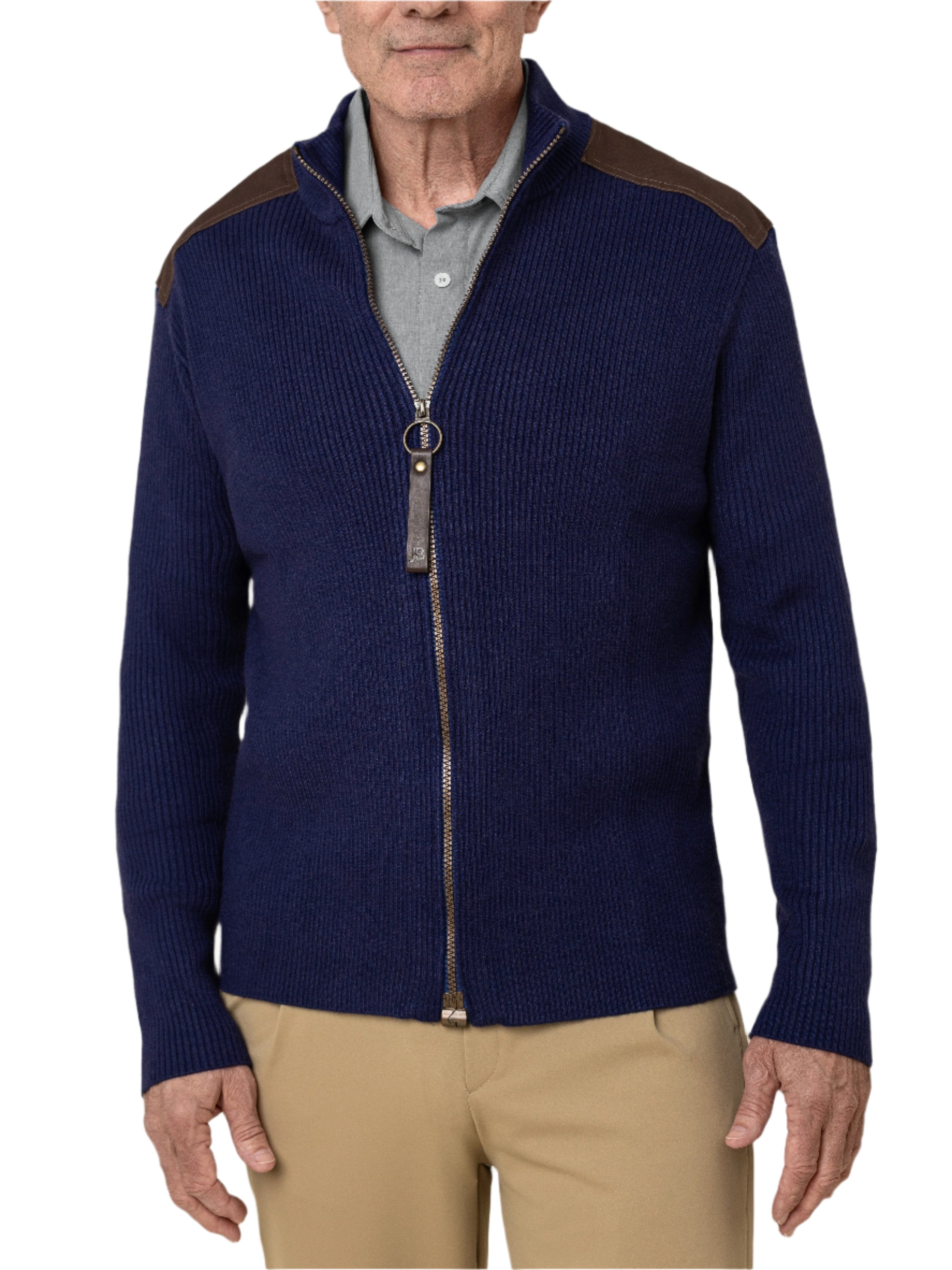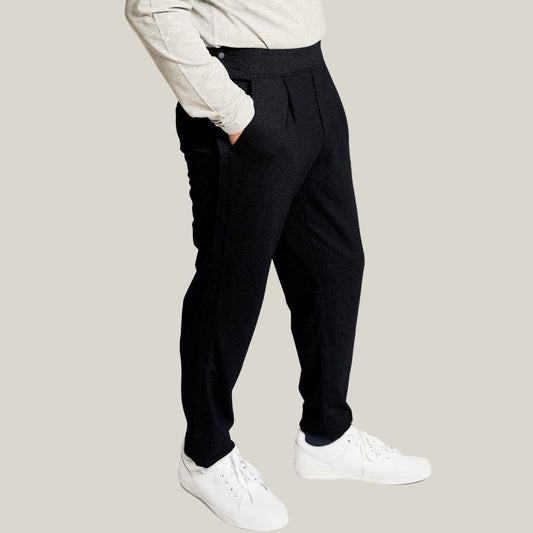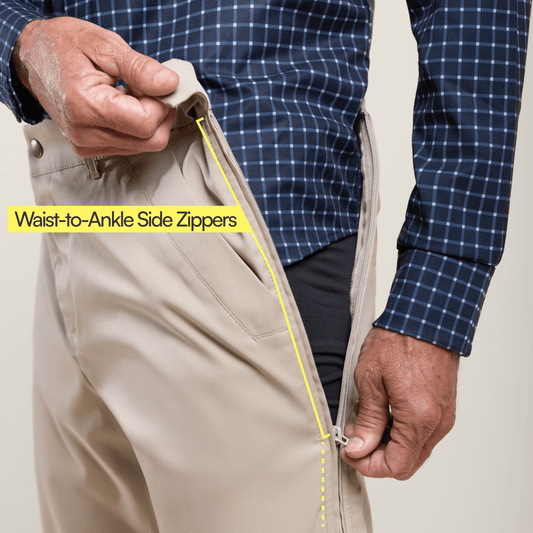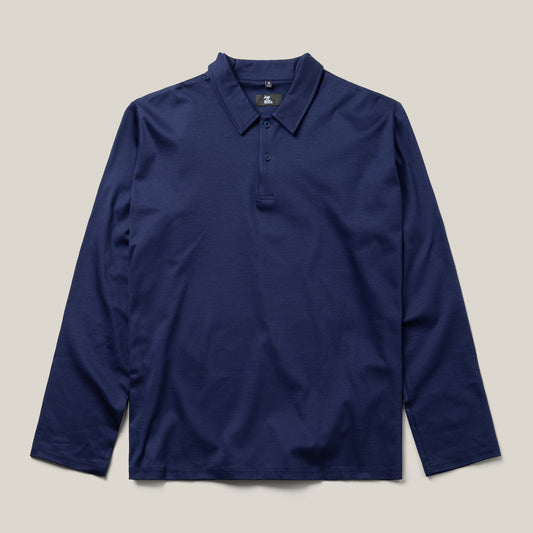After shoulder or rotator cuff surgery, getting dressed can become a daily challenge. Wearing a shoulder sling, managing swelling, and moving the operated arm all affect what clothing feels comfortable and safe.
Choosing the right clothes helps reduce strain on the affected shoulder and supports a smoother recovery.
Many people find it helpful to wear adaptive clothing for seniors that allows for easy access without lifting or pulling. Post-surgery clothing, like items with Velcro closures or open sleeves, can make the dressing process easier and less painful.
To stay comfortable throughout the day, you may also want to browse our full range of men’s, women’s, and disabled adaptive clothing.
For additional support, consider these helpful rotator cuff surgery recovery tips and explore comfort-focused clothing options for daily wear.
What is Rotator Cuff Surgery?
Rotator cuff surgery is performed to repair one or more torn tendons in the shoulder joint. These tears may result from injury, repetitive motion, or age-related degeneration.
The procedure helps restore function and reduce pain, but it also leads to a recovery period that limits upper body movement. During the initial weeks after surgery, patients often wear a shoulder sling to protect the operated arm.
With only one arm available, everyday tasks, such as getting dressed, can become difficult. This is why many individuals look for specialized clothing for shoulder surgery that allows for easy dressing without raising the affected arm.
Adjusting to recovery requires more than just rest. Simple tools and changes, like adaptive clothing and items that support one-handed living, can make daily routines more manageable and reduce unnecessary strain on the healing shoulder.
Things to Consider When Living with Rotator Cuff Surgery
Living with a healing shoulder after rotator cuff surgery requires thoughtful planning and adjustments to your daily routine.
Many people do not realize how often they rely on shoulder movement until it becomes limited. Tasks such as getting dressed, cooking meals, or grooming can become challenging with one functioning arm.
To stay comfortable and avoid added strain, focus on clothing and tools that support limited mobility.
When building your post shoulder surgery wardrobe, select pieces that do not require overhead motion or complex fastenings. Using adaptive clothing for limited mobility or garments designed for injury recovery can make daily tasks more manageable.
Here are some important areas to focus on during recovery:
Dressing Independently
After shoulder surgery, dressing can become one of the most difficult daily activities. The healing shoulder joint is often stiff and sore, and it is supported by a shoulder sling.
This is why pulling a shirt over your head or fastening buttons with one hand is not always possible. Choosing the right clothes to wear after shoulder surgery is essential to avoid pain and simplify the dressing process.
Many patients benefit from men’s adaptive shirts and women’s hospital gowns that include magnetic or Velcro closures. These designs allow you to dress using one hand and without raising your injured arm.
If you need assistance dressing, garments with open-back designs—like grandma nightgowns—allow caregivers to help without pulling or twisting your arm. For bottoms, men’s adaptive pants and women’s adaptive pants offer easy access and comfort.
To better understand what makes these items easier to wear, review our guide on how to put on a hospital gown.
Maintaining Good Hygiene
Maintaining hygiene after rotator cuff repair is necessary but often overlooked in recovery planning. Daily routines like showering, shaving, or brushing hair can be difficult with one arm.
Using a shower chair after shoulder surgery is highly recommended to avoid slipping and to reduce pressure on the affected shoulder. Sit down, go slowly, and avoid using your healing arm for balance or support.
Tasks like shaving or washing your hair may require you to use your non-dominant hand or temporarily skip certain steps. Plan ahead, give yourself extra time, and focus on safety to prevent re-injury.
Remember that hygiene is still possible with small adjustments and proper tools.
Doing Housework Tasks
Completing housework with an arm sling and limited shoulder mobility is difficult. Tasks like lifting laundry baskets, cleaning, or cooking can strain your healing shoulder if not approached carefully.
If possible, ask for help during the early stages of recovery. If you live alone, simplify your routine.
Furthermore, focus on essential items only. Prepare extra meals in advance, use lightweight tools, and avoid any chore that involves reaching, pushing, or pulling. Even wiping counters or carrying groceries can impact your recovery if not done cautiously.
Being realistic about what you can safely manage helps protect your healing muscles.
Standing and Sitting Comfortably
Standing and sitting become more complex when shoulder pain and stiffness limit your range of motion. Everyday tasks like getting out of bed, using a chair, or reaching for support can create discomfort in the operated shoulder or elbow.
The right clothing can make this easier by reducing pressure on the upper body and allowing for freedom of movement. Avoid tight clothing or anything that pulls across the shoulder joint. Use adaptive clothing that is easy to put on while seated.
Make sure your environment is set up to reduce unnecessary strain when sitting down or standing up. Supportive seating, like a cushioned recliner, may also reduce pain.
Sleeping Comfortably
Sleep is one of the most important parts of shoulder surgery recovery. However, it is often disrupted by pain, stiffness, or difficulty finding a good sleeping position.
Wearing comfortable nightgowns or soft sleepwear designed for limited mobility can reduce friction and allow your body to rest without restriction.
Many patients sleep in a reclining chair after shoulder surgery to avoid rolling onto the healing shoulder or lying flat. This position reduces strain and supports better circulation. Use extra pillows to prop your arm and maintain alignment.
Overall, prioritizing your sleeping setup is essential for a smooth recovery.
Type of Clothes to Wear After Shoulder Rotator Cuff Surgery

The clothes you choose after surgery will impact how comfortably and safely you move throughout the day. Years ago, many patients were told to cut the sleeve off an oversized t-shirt to create a temporary solution. While that may work in a pinch, it offers little support and does not hold up well. Today, there are far better options designed specifically for post-shoulder surgery wardrobe needs:
Shirts and Blouses with Buttons on the Front
Shirts with front buttons are widely recommended after shoulder surgery because they eliminate the need to lift your arms or pull clothing overhead. You may also find our shoulder surgery shirts helpful, since they’re designed specifically for dressing with limited mobility They are easy to open, close, and adjust to accommodate your healing arm and shoulder sling.
However, traditional buttons can be difficult to manage with one hand. To avoid the frustration of aligning and fastening buttons, consider adaptive alternatives with magnetic closures or snap fronts.
Joe & Bella offers a wide range of practical and stylish choices that promote pain-free dressing, such as:
- Magnetic clothing: Shirts with built-in magnets that snap together with one hand—ideal for limited mobility.
- Relaxed-fit button-down shirts: Easy-to-wear shirts with more room through the shoulders and chest.
- Buttonless dress shirts: Formal shirts designed without traditional buttons for quick, stress-free dressing.
- Women’s shirts with magnetic buttons: Fashionable options for women that combine style and adaptive function.
- Easy button shirts for seniors: Designed with larger closures or alternatives to make buttoning simpler for one-handed use.
- Buttonless polos: Classic polo shirts redesigned with pull-on comfort and no small fasteners.
There are also snap-front alternatives, including:
- Snap flannel shirts: Warm, soft shirts with front snaps instead of buttons—ideal for layering.
- Snap button shirts: Easy-to-fasten tops that require less grip strength than traditional buttons.
- Men’s snap button shirts: Adaptive casual shirts for men recovering from surgery.
- Women’s snap button shirts: Functional tops designed for post-op dressing ease.
- Magnetic button shirts for women: A go-to for women who need fast and secure closures without overhead motion.
- Snap front blouses: Feminine blouses that are easy to put on with minimal arm use.
- Women’s button down shirts: Traditional styles made with recovery-friendly fits and closures.
Loose-Fitting Clothes
Loose-fitting clothing is a go-to choice for post-shoulder surgery because it gives your body space to breathe and reduces pressure on swollen or bandaged areas.
Unlike tight-fitting clothes, loose garments prevent rubbing and allow you to move freely without aggravating the operated arm or shoulder sling.
If you typically wear more fitted clothing, consider sizing up during recovery. Clothing made for relaxed wear also simplifies the dressing process, especially when you are limited to one arm. Explore:
- Bariatric clothing: Generously cut garments that allow extra space for bandages, swelling, and easier dressing.
- Bariatric socks: Stretchy, non-restrictive socks that accommodate larger legs and swollen feet.
Open Back Tops for Assisted Clothing

If you need help dressing, open-back clothing is the best solution. These tops reduce pain and avoid overhead movement entirely. Caregivers can slide them on from behind, minimizing twisting or pulling on your healing shoulder.
Joe & Bella can provide you with the following:
- Men’s open front shirts: Adaptive tops for men that open from the back or side to allow assisted dressing.
- Open button shirts: Shirts with flexible openings that do not require full mobility to wear.
- Women’s open shirts: Comfortable tops for women designed to be put on with minimal movement.
- Open-back shirts: A classic design that opens fully in the back, perfect for those with restricted shoulder or arm motion.
Pants with Side Zippers

Even though your surgery is in the shoulder area, upper body limitations affect how easily you can manage your pants. Side zippers and pull-on pants allow you to dress while seated and without lifting your arms too high.
At Joe & Bella, our offerings include:
- Elastic waist dress pants: Comfortable pants that stretch at the waist for easier movement and fit.
- Men’s pull-on pants: Simple, no-fuss pants designed for seated dressing and one-handed use.
- Side zips: Pants with zippers along the side seam to allow easy dressing without bending.
- Petite pull-on pants for the elderly: A great choice for shorter patients recovering from surgery.
- Chinos with elastic waist: Smart-casual trousers that stretch and flex with your movement.
- Nephrostomy bag clothing: Pants designed with access panels and space for medical devices.
- Side snap pants: Pants that open along the side seam for quick dressing.
- Women’s side snap pants: Adaptive pants for women who need minimal arm movement to dress.
- Men’s side snap pants: A practical option for post-op men needing simple dressing solutions.
- Men’s incontinence pants: Soft and supportive pants with built-in features for comfort and ease.
- Women’s incontinence pants: Designed to support personal care while maintaining dignity.
- Magnetic pants: Innovative bottoms that use magnets in place of zippers or buttons.
- Open side pants: A completely accessible pant option for those with limited movement.
- Women’s dress pants: Tailored yet adaptive pants that look polished and feel comfortable.
Footwear with Velcro or Slip-Ons

Footwear is often overlooked but plays an important role during recovery. Choose shoes or socks that do not require bending, tying, or using both arms. This helps you stay balanced while reducing shoulder strain.
Explore the following options from Joe & Bella:
- Hospital socks: Non-slip socks designed for walking safely on slick floors.
- Compression socks: Help reduce swelling and improve circulation while seated or resting.
- Standard socks: Comfortable daily socks that are easy to pull on with one hand.
- Gripper socks: Added traction for fall prevention, ideal for recovering patients.
- Diabetic socks: Seam-free and non-binding socks for sensitive feet.
- Arthritis socks: Stretchy and soft to reduce joint discomfort.
- Raynaud’s socks: Insulated socks designed to retain warmth and protect circulation.
- Compression socks for travel: Great for long periods of sitting or post-surgery flights.
- Hospital compression socks: Dual-purpose socks for both support and safety.
- Non-slip socks for men: An Easy footwear alternative with slip resistance.
Front Opening Underwear
Undergarments may not be the first thing you consider post-surgery, but they are important. Traditional waistbands can cause discomfort when pulling them on using only one arm.
Front-opening options or high-stretch fabrics reduce the need for excessive movement, helping protect your shoulder during dressing.
Women recovering from surgery may also find adaptive undergarments helpful, as they are designed with accessibility and soft materials in mind.
Adaptive Nightgowns

Nightgowns are a comfortable and practical option for post-surgery recovery. Look for gowns with front Velcro closures or wide neck openings that can be worn with minimal movement. They are easy to slip into and allow you to rest comfortably without irritating your shoulder.
Here are a few options Joe & Bella offers:
- House dresses: Loose-fitting gowns ideal for all-day wear during recovery.
- Clothes for older women: Includes easy-to-dress gowns designed for comfort and modesty.
- Grandma nightgowns: Classic adaptive gowns that offer full coverage and pain-free dressing.
How Does Adaptive Clothing Help People with Rotator Cuff Surgery?
After rotator cuff surgery, small tasks like buttoning a shirt or pulling on pants can cause discomfort or disrupt healing. Adaptive designs help minimize that risk.
Adaptive clothing supports recovery by reducing strain on the shoulder joint and simplifying the dressing process. Designed for people with limited mobility, these garments allow patients to get dressed with one hand, avoid overhead motion, and stay comfortable throughout the day.
Joe & Bella’s shoulder surgery adaptive shirts and recovery-friendly apparel offer easy-access features like magnetic closures, open-back designs, and stretchable fabrics. Explore more options at Joe & Bella to support your recovery.
Enjoy Comfort After Shoulder Surgery with Joe & Bella’s Adaptive Clothing
Recovery after shoulder surgery affects more than mobility—it can also impact how confident and independent you feel daily.
Joe & Bella offers adaptive clothing designed to reduce discomfort and make dressing easier, so you can focus on healing without added stress.
Our collections include thoughtful gifts for the elderly, practical gifts for dad, and gifts for mom that support comfort and dignity throughout recovery.






